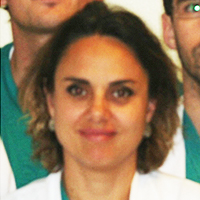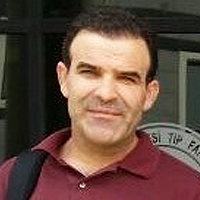Abstract
Case Report
Time to Terminate LNT: Radiation Regulators Should Adopt LT
Jeffry A Siegel*, Bill Sacks and James S Welsh3
Published: 26 June, 2017 | Volume 1 - Issue 2 | Pages: 049-053
The linear no-threshold hypothesis (LNT)-the basis of radiation regulatory policy-extrapolates from observed high-dose harm to assumed low-dose harm, entailing that all ionizing radiation is harmful, by denying any biological response to damage and asserting cumulative lifetime harm, regardless of dose or dose rate. All aspects of LNT are demonstrably false. There are evolved biological responses that repair or remove radiogenic damage from low doses and dose rates, thereby averting acute harm and precluding the alleged cumulative damage. LNT and its offspring, the “as low as reasonably achievable” principle, do not err on the side of caution; neither is truly conservative. The public needs protection from radiophobia, rather than from low-dose radiation exposure. Neither radiation regulations nor medical practice should be based on LNT, but rather, at least as a first step, on a linear (down to a) threshold (LT) model.
Read Full Article HTML DOI: 10.29328/journal.jro.1001007 Cite this Article Read Full Article PDF
Keywords:
Linear No-Threshold (LNT) model; ALARA; Low-dose radiation risk; Adaptive response; Radiation protection; Radiation carcinogenesis
References
- Siegel JA, Welsh JS. Does imaging technology cause cancer? Debunking the linear no-threshold model of radiation carcinogenesis. Technol Cancer Res Treat. 2016; 15: 249-256. Ref.: https://goo.gl/HXiFzN
- Siegel JA, Pennington CW, Sacks B. Subjecting radiological imaging to the linear no-threshold hypothesis: a non sequitur of non-trivial proportion. J Nucl Med. 2017; 58: 1-6. Ref.: https://goo.gl/UEzLJ2
- Sacks B, Meyerson G, Siegel JA. Epidemiology without biology: false paradigms, unfounded assumptions, and specious statistics in radiation science (with commentaries by Inge Schmitz-Feuerhake and Christopher Busby and a reply by the authors). Biol Theory. 2016; 11: 69-101. Ref.: https://goo.gl/JyntJf
- Siegel JA, Sacks B, Stabin MG. LNT 999. Health Physics News. 2015; 23-24.
- The Japan Times. Fukushima stress deaths top 3/11 toll. 2014.
- United Nations and International Atomic Energy Agency. Chernobyl Forum: Chernobyl’s Legacy: Health, Environmental and Socio-Economic Impacts and Recommendations to the Governments of Belarus. The Russian Federation and Ukraine. 2006; 2003-2005. Ref.: https://goo.gl/Jcyz8H
- Bennett B, Repacholi M, Carr Z. World Health Organization (WHO). Health Effects of the Chernobyl Accident and Special Care Programmes. Report of the UN Chernobyl Forum Expert Group “Health.” Ed: WHO Press, World Health Organization, Geneva, Switzerland. 2006.
- United Nations Information Service. No Immediate Health Risks from Fukushima Nuclear Accident Says UN Expert Science Panel. 2013. Ref.: https://goo.gl/iKgKZc
- Siegel JA, Marcus CS, Welsh JS, Pennington CW, Stabin MG. Regulatory application of the LNT hypothesis and ALARA to protect radiosensitive people is misguided. Health Phys News. 2016; 23-24.
- Mitchel RE. The dose window for radiation-induced protective adaptive responses. Dose-Response 2009; 8:192-208. Ref.: https://goo.gl/sroLFz
- Little MP, Wakeford R, Tawn EJ, Bouffler SD, de Gonzalez AB. Risks associated with low doses and low dose rates of ionizing radiation: why linearity may be (almost) the best we can do. Radiology. 2009; 251: 6-12. Ref.: https://goo.gl/Xft1nN
- Little MP. Ionising radiation in the workplace. BMJ. 2015; 351. Ref.: https://goo.gl/426YRP
- Luckey TD. Radiation Hormesis. Boca Raton. 1991. Ref.: https://goo.gl/kHAxtT
- Aurengo A, Averbeck D, Bonnin A. Dose-effect Relationships and Estimation of the Carcinogenic Effects of Low Doses of Ionizing Radiation. Paris: Académie des Sciences-Académie nationale de Médecine; 2005.
- Feinendegen LE, Pollycove M, Neumann RD. Low-dose cancer risk modeling must recognize up-regulation of protection. Dose-Response. 2009; 8: 227-252. Ref.: https://goo.gl/HUWd6v
- Siegel JA, Pennington CW, Sacks B, Welsh JS. The birth of the illegitimate linear no-threshold model: an invalid paradigm for estimating risk following low-dose radiation exposure. Am J Clin Oncol. 2015. Ref.: https://goo.gl/5LgGTD
- Löbrich M, Rief N, Kühne M, Heckmann M, Fleckenstein J, et al. In vivo formation and repair of DNA double strand breaks after computed tomography examinations. Proc Natl Acad Sci USA. 2005; 102: 8984-8989. Ref.: https://goo.gl/scZEvt
- Vandevoorde C, Franck C, Bacher K, Breysem L, Smet MH, et al. γ-H2AX foci as in vivo effect biomarker in children emphasize the importance to minimize X-ray doses in paediatric CT imaging. Eur Radiol. 2015; 25: 800-811. Ref.: https://goo.gl/Ny3MmR
- Halm BM, Franke AA, Lai JF, Turner HC, Brenner DJ, et al. γ-H2AX foci are increased in lymphocytes in vivo in young children 1 h after very low-dose X-irradiation: a pilot study. Pediatr Radiol. 2014; 44: 1310-1317. Ref.: https://goo.gl/28NS2W
Similar Articles
Recently Viewed
-
Advancing Forensic Approaches to Human Trafficking: The Role of Dental IdentificationAiswarya GR*. Advancing Forensic Approaches to Human Trafficking: The Role of Dental Identification. J Forensic Sci Res. 2025: doi: 10.29328/journal.jfsr.1001076; 9: 025-028
-
Scientific Analysis of Eucharistic Miracles: Importance of a Standardization in EvaluationKelly Kearse*,Frank Ligaj. Scientific Analysis of Eucharistic Miracles: Importance of a Standardization in Evaluation. J Forensic Sci Res. 2024: doi: 10.29328/journal.jfsr.1001068; 8: 078-088
-
Sinonasal Myxoma Extending into the Orbit in a 4-Year Old: A Case PresentationJulian A Purrinos*, Ramzi Younis. Sinonasal Myxoma Extending into the Orbit in a 4-Year Old: A Case Presentation. Arch Case Rep. 2024: doi: 10.29328/journal.acr.1001099; 8: 075-077
-
Toxicity and Phytochemical Analysis of Five Medicinal PlantsJohnson-Ajinwo Okiemute Rosa*, Nyodee, Dummene Godwin. Toxicity and Phytochemical Analysis of Five Medicinal Plants. Arch Pharm Pharma Sci. 2024: doi: 10.29328/journal.apps.1001054; 8: 029-040
-
Antibacterial Screening of Lippia origanoides Essential Oil on Gram-negative BacteriaRodrigo Marcelino Zacarias de Andrade, Bernardina de Paixão Santos, Roberson Matteus Fernandes Silva, Mateus Gonçalves Silva*, Igor de Sousa Oliveira, Sávio Benvindo Ferreira, Rafaelle Cavalcante Lira. Antibacterial Screening of Lippia origanoides Essential Oil on Gram-negative Bacteria. Arch Pharm Pharma Sci. 2024: doi: 10.29328/journal.apps.1001053; 8: 024-028.
Most Viewed
-
Evaluation of Biostimulants Based on Recovered Protein Hydrolysates from Animal By-products as Plant Growth EnhancersH Pérez-Aguilar*, M Lacruz-Asaro, F Arán-Ais. Evaluation of Biostimulants Based on Recovered Protein Hydrolysates from Animal By-products as Plant Growth Enhancers. J Plant Sci Phytopathol. 2023 doi: 10.29328/journal.jpsp.1001104; 7: 042-047
-
Sinonasal Myxoma Extending into the Orbit in a 4-Year Old: A Case PresentationJulian A Purrinos*, Ramzi Younis. Sinonasal Myxoma Extending into the Orbit in a 4-Year Old: A Case Presentation. Arch Case Rep. 2024 doi: 10.29328/journal.acr.1001099; 8: 075-077
-
Feasibility study of magnetic sensing for detecting single-neuron action potentialsDenis Tonini,Kai Wu,Renata Saha,Jian-Ping Wang*. Feasibility study of magnetic sensing for detecting single-neuron action potentials. Ann Biomed Sci Eng. 2022 doi: 10.29328/journal.abse.1001018; 6: 019-029
-
Pediatric Dysgerminoma: Unveiling a Rare Ovarian TumorFaten Limaiem*, Khalil Saffar, Ahmed Halouani. Pediatric Dysgerminoma: Unveiling a Rare Ovarian Tumor. Arch Case Rep. 2024 doi: 10.29328/journal.acr.1001087; 8: 010-013
-
Physical activity can change the physiological and psychological circumstances during COVID-19 pandemic: A narrative reviewKhashayar Maroufi*. Physical activity can change the physiological and psychological circumstances during COVID-19 pandemic: A narrative review. J Sports Med Ther. 2021 doi: 10.29328/journal.jsmt.1001051; 6: 001-007

HSPI: We're glad you're here. Please click "create a new Query" if you are a new visitor to our website and need further information from us.
If you are already a member of our network and need to keep track of any developments regarding a question you have already submitted, click "take me to my Query."


















































































































































